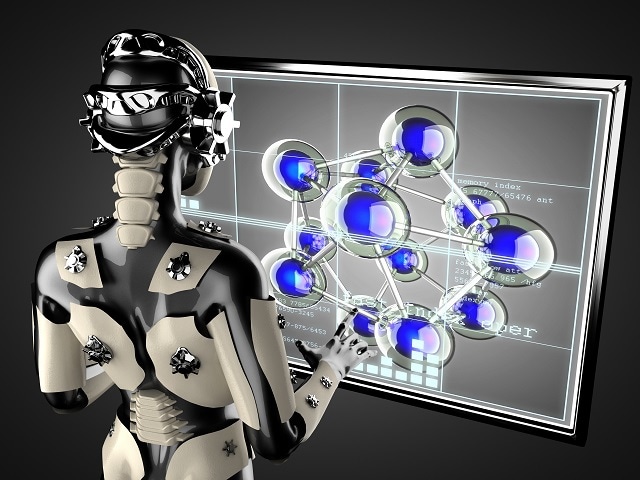Sep 18 2014

Image Credits: videodoctor/shutterstock.com
Once the basic components required for making a robot are selected, a structure or framework has to be designed by combining all the parts together to achieve a definite shape.
This article elaborates on the various connections involved in a robotic structure.
Connections of Motor Controller
Gear motors or linear actuators are connected to the motor controller. A red wire of the DC gear motor is connected to M+ terminal of the motor controller, and the black wire is connected to the M- terminal.
The black, red and yellow wires of a servo motor are connected to the respective terminals of the controller. Care should be taken while connecting the wires as reversing the wire connections enables the motor to rotate in a counterclockwise direction.
Most of the motor controllers are provided with two battery terminals B+ and B-. Since all the components function at different voltage levels, various batteries may be required to power the parts. The standard voltage levels of various components of robots are as follows:
- Standard battery units - 3.7, 4.8, 6, 7.4, 9, 11.1 and 12V
- DC motor controllers – 3 to 48V
- Sensing devices – 3.3, 5 and 12V
- Microcontrollers – 3 to 12V
- Stepper motors – 6 to 12V
- Servo motors – 4.8 to 12V
- DC gear motors – 3 to 24V
Connections of Microcontroller
Motor controllers are connected to microcontrollers through several means which are as follows:
- R/C connection – A signal pin of a R/C motor controller is connected to a digital pin of the microcontroller.
- PWM connection – In general, each motor of the motor controller will be provided with a PWM input terminal and digital input terminal. PWM and digital input pins of the motor controller are connected to the PWM and digital output pins of the microcontroller.
- I2C connection – GND, V, SCL and SDA pins of the motor controller are connected to the respective pins of the microcontroller.
- Serial connection – The receiving pin, Rx of the motor controller is connected to the transmitting pin, Tx of the microcontroller.
The connection between the sensors and the microcontrollers is carried out by the following ways:
- Analog connection – The microcontroller should have an analog pin to read the analog signals generated by the analog sensors.
- Digital connection – The digital pin of the digital sensor is connected to the digital microcontroller pin to read the digital signals produced by digital sensor.
The sensors can also be connected using I2C or serial connections like microcontrollers. Communication devices are connected to the V+, GND, TX and RX microcontrollers through serial communication.
Other Connections
Electrical and electronic components can be mounted on to a frame using cable ties, glue, Velcro, nuts, screws and hex spacers.
Wheels are ideally connected to the motor shaft. If the connections are not compatible, a suitable hub can be used.
Sources and Further Reading